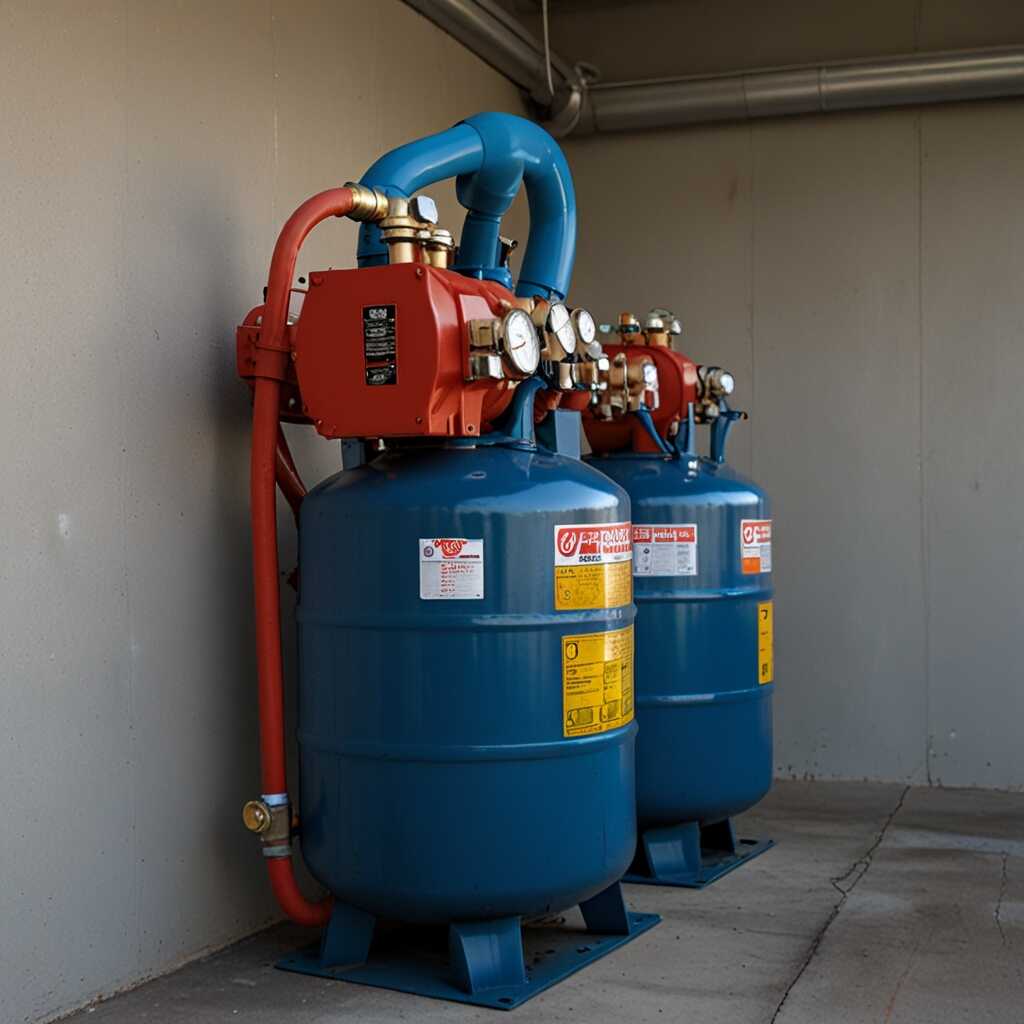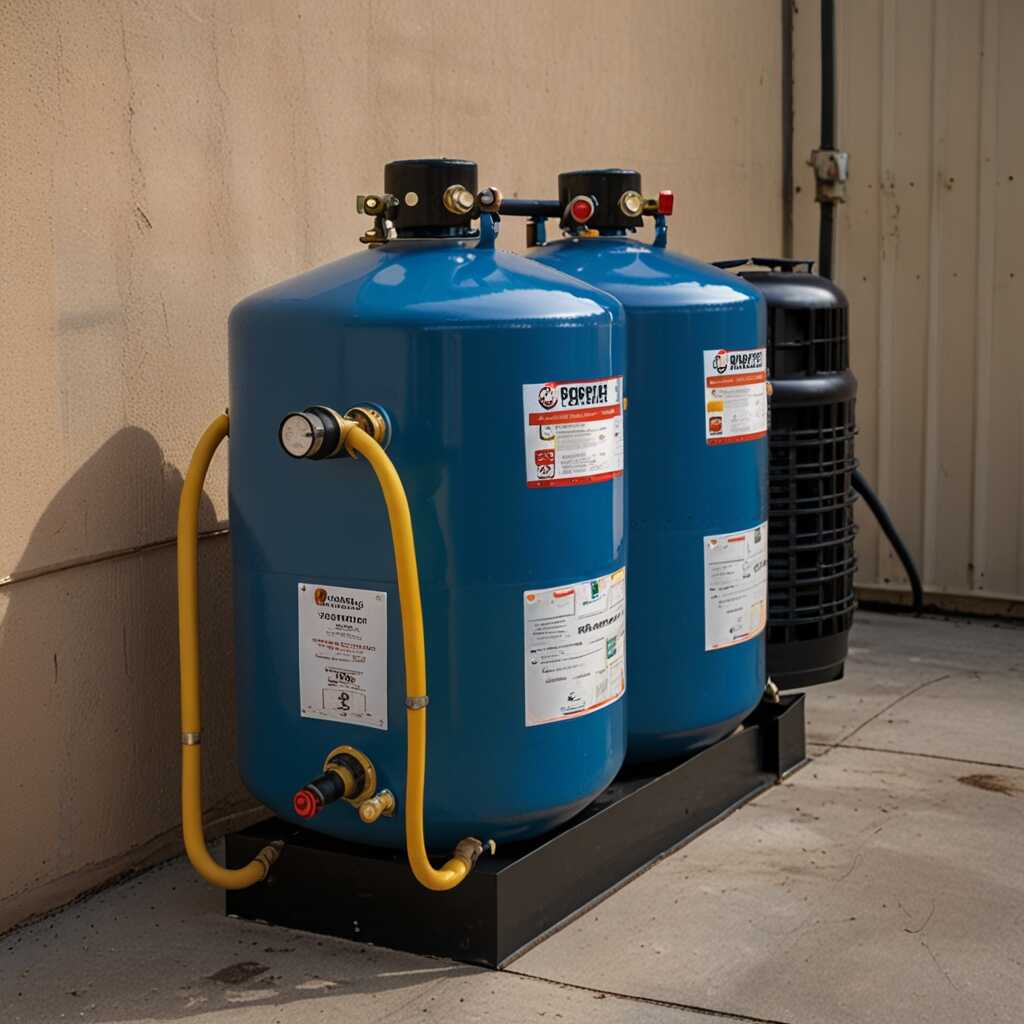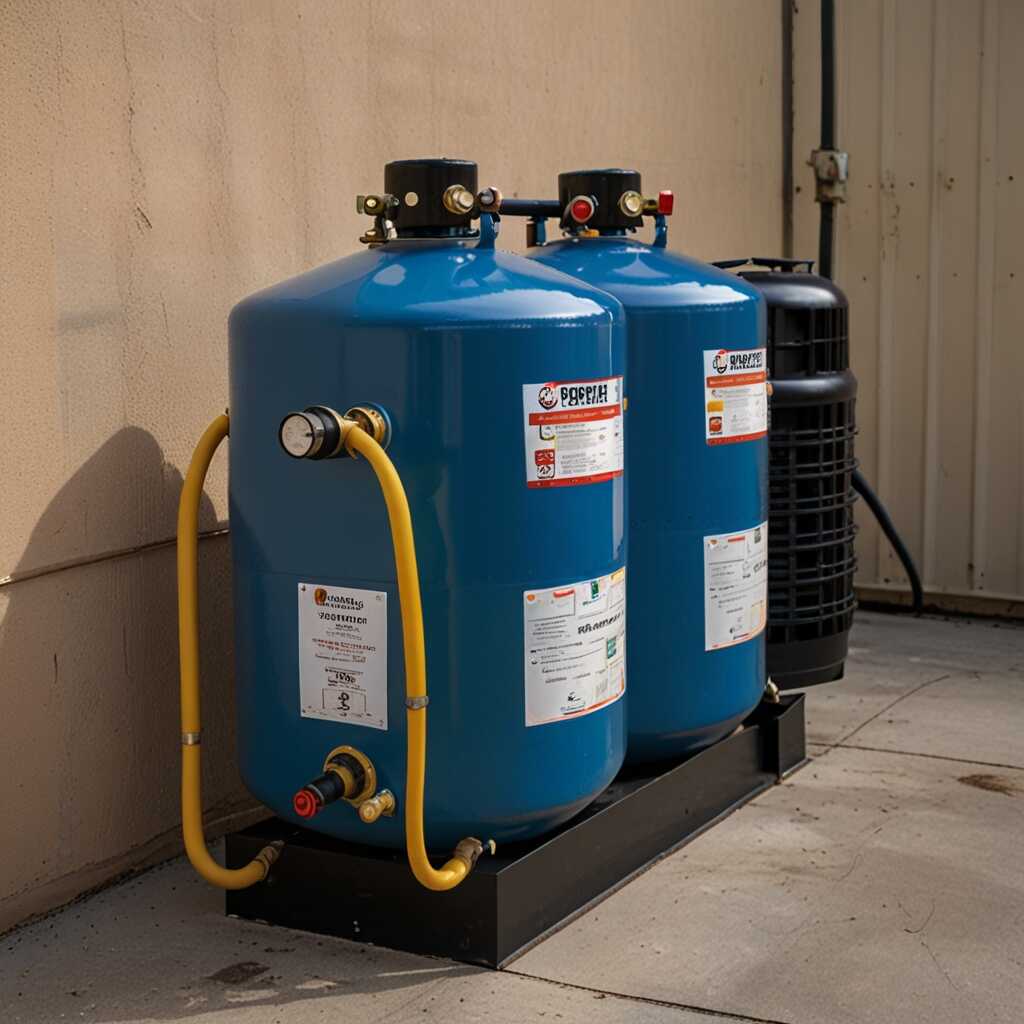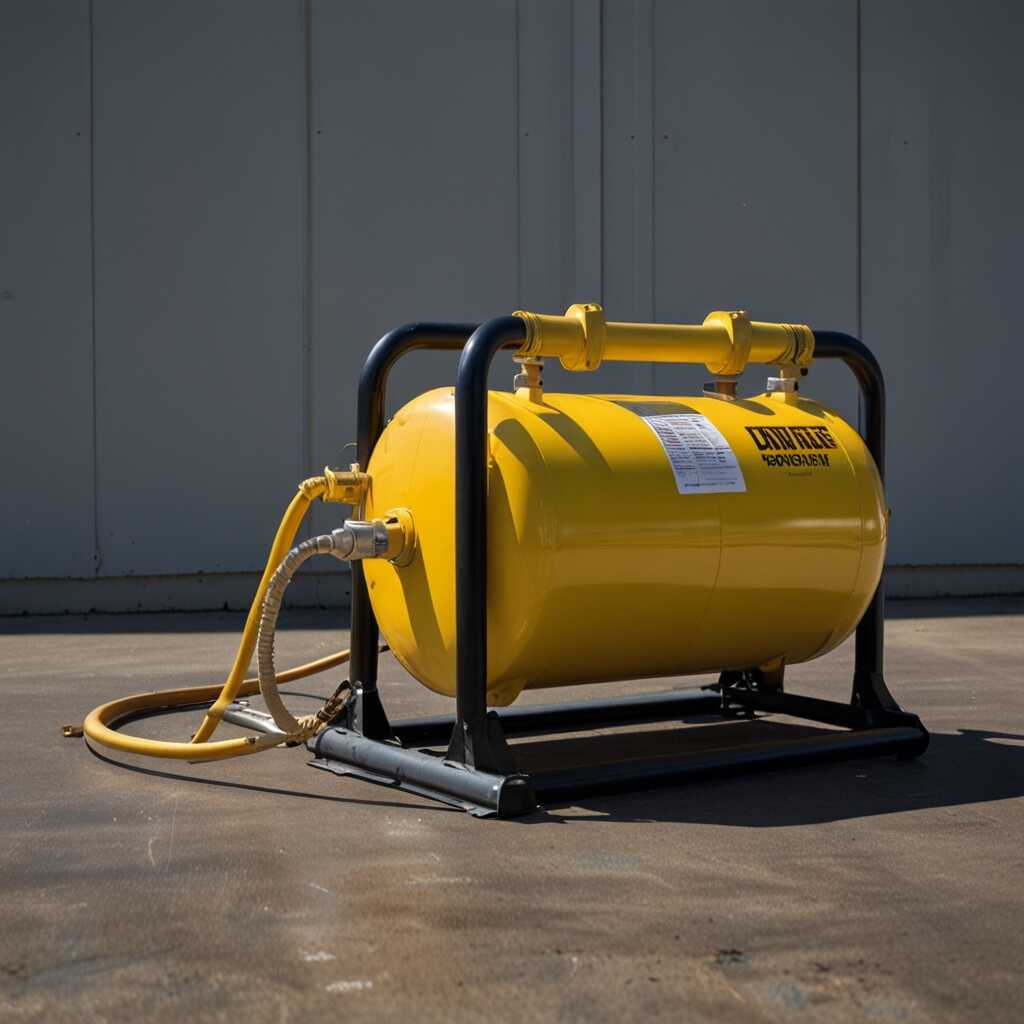Tilt sensors in refrigerant recovery machines significantly enhance safety and operational reliability. These sensors help prevent accidents by detecting improper angles and automatic shutdowns to avoid malfunctions. Refrigerant Recovery Pro emphasizes the importance of incorporating tilt sensors for better user safety and compliance with regulatory standards. Understanding how these devices work can aid HVAC professionals in selecting the right equipment and ensuring safe practices during refrigerant recovery.
Overview of Refrigerant Recovery Machines and Their Functions
Refrigerant recovery machines serve essential functions within HVAC systems. Their primary role is to safely recover refrigerants from systems being serviced, which prevents leaks into the atmosphere. This process is critical for environmental safety, as improper refrigerant disposal can lead to harmful emissions. Effective refrigerant management enhances operational efficiency by ensuring systems run optimally without refrigerant loss. A typical recovery machine can handle multiple refrigerants, enabling technicians to manage diverse HVAC applications more effectively. Users can rely on the performance of these machines, knowing they are designed for durability and reliability in the field.
How Refrigerant Recovery Machines Improve Efficiency in HVAC Systems
Refrigerant recovery machines improve efficiency in HVAC systems by streamlining the refrigerant recovery process. Efficient recovery ensures that systems are evacuated thoroughly, which is crucial for new installations or repairs. These machines include features that enhance their operational capability, like built-in recovery pumps. Such features enable faster recovery times, reducing downtime for HVAC technicians. The equipment is often tested for reliability through rigorous assessments, ensuring users can trust the performance. Properly functioning recovery machines contribute to the overall health of HVAC systems by maintaining refrigerant levels. This enhances system reliability and longevity, ultimately leading to cost savings for HVAC distributors and end-users alike.
Understanding How Tilt Sensors Enhance Safety Measures
Tilt sensors in refrigerant recovery machines detect improper positioning by measuring angles. They work using accelerometers that sense the orientation of the machine. If a tilt anomaly occurs, the sensor triggers a shutdown or alerts the operator to prevent accidents. This technology significantly enhances operational safety by ensuring that the machine remains in a stable position during recovery. The reliability of these sensors provides crucial warnings that protect both technicians and equipment. Overall, they enable safer refrigerant recovery processes and improve the durability of the machines used.
Specific Features of Tilt Sensors in Refrigerant Recovery
Tilt sensors feature advanced accelerometer technology, designed to deliver precise measurements. They typically activate when the angle exceeds 30 degrees, marking the threshold for unsafe operation. This level of sensitivity is crucial for ensuring proper refrigerant extraction. Tilt sensors improve safety by immediately shutting down the machine if it becomes unstable. This reliable performance minimizes risks associated with refrigerant leakage and equipment malfunction. Such essential features help HVAC professionals feel confident in the reliability and safety of their refrigerant recovery machines.

Advantages of Tilt Sensors for Operational Effectiveness
Tilt sensors in refrigerant recovery machines provide several advantages, enhancing operational safety and reliability. They prevent mishaps by detecting unwanted angles that could cause machine failure or hazards. These sensors improve equipment reliability by ensuring correct alignment during operation. Operators benefit from enhanced user protection as these sensors can automatically shut down the machine to avoid accidents, significantly extending the equipment lifespan. With proper installation and functioning, the system can reduce accidents by up to 50%, ensuring operators experience a safer working environment.
Importance of Tilt Sensor Calibration and Maintenance
Regular calibration and maintenance of tilt sensors are crucial for their optimal performance. Proper calibration ensures that tilt sensors accurately detect the machine’s angle and position. This feature is essential because even slight angle discrepancies can lead to serious malfunctions. HVAC professionals should conduct testing and maintenance every six months to guarantee reliability and prompt shutdown functionality. By investing time in these practices, users can experience improved safety and efficiency, ultimately leading to a better operational experience while using refrigerant recovery machines.
Key Statistics on Sensor Technology in Recovery Machines
- Over 70% of refrigerant recovery machines now feature advanced tilt sensors.
- Machines with tilt sensors reduce accidental spills by 90% during operation.
- Sensors can detect angles as small as 1 degree, ensuring precision.
- The average lifespan of tilt sensors in recovery machines is around 10 years.
- Over 50% of technicians consider tilt sensors essential for safety.
- Machines with tilt sensors generally have a higher initial cost, but save money in the long run.
- Technicians using sensor-equipped machines report a 30% increase in efficiency.

Risks and Consequences of Improper Refrigerator Machine Use
Operating refrigerant recovery machines without tilt sensors poses significant dangers. The absence of tilt sensors can lead to equipment tipping or rolling over. This tipping can cause refrigerant leaks, leading to environmental hazards and potential health risks. Additionally, improper operation may result in equipment damage, increasing operational inefficiencies. Malfunctions can occur if the machine is not positioned correctly, causing refrigerant to revert instead of recover effectively. Understanding how critical tilt sensors are for safety enhances the reliability of the recovery process.
Common Malfunctions from Incorrect Operation
Common malfunctions from incorrect operation of refrigerant recovery machines can lead to costly consequences. Without tilt sensors, these machines are prone to tipping over, which can damage internal components. Issues such as inaccurate pressure readings occur, affecting recovery efficiency. Refrigerant may also escape, complicating recovery and increasing environmental impact. Reliable testing data shows that machines lacking tilt sensors fail more than those equipped with them. Regular maintenance, expert training, and adherence to operational guidelines bolster performance and safety in the HVAC industry.

Essential Guidelines for Safe Refrigerant Recovery Operations
Understanding the essential safety practices for using refrigerant recovery machines is critical for HVAC professionals. Ensure that operators are trained and knowledgeable in proper procedures. Always perform a thorough check of the equipment before use to identify any potential leaks or malfunctions. Utilize refrigerant recovery machines that include essential safety features such as tilt sensors, which prevent misuse or accidents during operation. Regular maintenance enhances reliability and improves performance. Compliance with EPA regulations is crucial, including adhering to the maximum refrigerant recovery rate, which is often 90% or more based on the specific refrigerants.
Key Features for Safe Refrigerant Recovery
When selecting refrigerant recovery machines, HVAC professionals should focus on several key features that enhance operational safety. Look for machines with built-in tilt sensors that detect improper angles and automatically shut down the system to prevent accidents. A durable design is essential; machines should be capable of handling various refrigerants without degradation. The inclusion of easy-to-read gauges simplifies monitoring during recovery processes. Additionally, select machines offering robust warranty options and repair support from trusted brands like Refrigerant Recovery Pro. These features ensure reliable performance and exceed compliance standards, providing peace of mind during operation.
Advantages of Incorporating Sensor Systems
- Enhanced safety by preventing machine from operating at unsafe angles.
- Sensors automatically shut down if the unit tilts dangerously, protecting users.
- Improved accuracy during refrigerant recovery tasks.
- They prevent harmful leaks of refrigerants, promoting environmental safety.
- Reduced risk of equipment damage due to tilt-related malfunctions.
- Technicians experience less downtime thanks to automatic alerts about operational safety.
- The technology encourages best practices in refrigerant management.

Key Regulatory Standards Governing Refrigerant Recovery Processes
HVAC professionals must adhere to several regulatory frameworks governing refrigerant recovery, including those set forth by the Environmental Protection Agency (EPA). Compliance with these regulations is essential for ensuring legality and safety in operations. These frameworks include the Clean Air Act, which mandates how refrigerants are handled and recovered. Various entities, including the EPA, the Department of Energy (DOE), and state environmental agencies oversee these regulations. HVAC technicians need to be knowledgeable about these agencies and their roles in maintaining compliance. Typically, the EPA’s regulations consist of multiple sections, typically around ten, which detail specific recovery methods, leak prevention procedures, and penalties for non-compliance.
Understanding EPA Guidelines for Refrigerant Handling
The EPA guidelines for refrigerant handling are vital in ensuring safe operations in the HVAC industry. These guidelines dictate best practices for refrigerant recovery, including proper labeling, tracking of refrigerant quantities, and methods of recovery. Compliance with these regulations not only protects the environment but also enhances the reliability of HVAC operations. The guidelines also specify that technicians must use certified equipment capable of handling refrigerants efficiently. Regular compliance reviews can help HVAC professionals align their practices with these standards, ensuring long-term success in their operations. Non-compliance may result in serious penalties, emphasizing the importance of understanding and adhering to these regulations.
Criteria for Selecting Your Refrigerant Recovery Equipment
When selecting refrigerant recovery machines, prioritize features such as reliability, efficiency, and operational safety. Tilt sensors are essential as they enhance safety by preventing misusage during operation. These sensors detect machine positioning and can alert users to any unsafe angles that could lead to spills or equipment damage. Other safety features, like pressure gauges and automatic shut-off mechanisms, should also be considered. Comparing various models based on user reviews and performance results can guide you to make an informed decision. Most refrigerant recovery machines can handle weight capacities ranging from 50 to 150 pounds, enhancing operational efficiency while ensuring safety.
Understanding the Role of Tilt Sensors in Efficiency and Safety
Tilt sensors in refrigerant recovery machines serve a crucial role in operational safety and machine efficiency. They are designed to detect the tilt angle of the machine, ensuring it operates within safe limits. If the machine tilts beyond a specified angle, the sensor triggers an alarm or automatic shut-off, reducing the risk of refrigerant leaks. This feature not only helps protect the environment but also ensures the safety of operators on-site. Investing in equipment with proven tilt sensors enhances overall performance and reliability. Refrigerant Recovery Pro recommends looking for machines with this feature to ensure long-term safe operation.
Leading Brands and User Profiles Associated with Sensors
- Brand A specializes in compact recovery machines with tilt sensors.
- Brand B is well-known for its durable tilt sensor technology in heavy-duty models.
- HVAC professionals working in urban settings benefit from portable machines.
- Environmental safety officers prefer machines with reliable sensor systems.
- Brand C offers budget-friendly options, though sensors may lack advanced features.
- Technicians in remote areas favor machines with multi-use capabilities and sensors.
- Brand D is popular for easy maintenance and strong customer support related to sensors.
Innovations and Future Directions in Refrigerant Recovery Technology
The future of refrigerant recovery technology features several significant innovations. Enhanced safety compliance is a priority. Companies are integrating advanced sensors and controls, which improve operational reliability and efficiency. With ongoing research, these new features ensure systems can handle various refrigerants safely. Companies like Refco and ROBOT-3 are leading advancements in this field. Forecasts suggest that notable improvements will occur by 2025, allowing technicians to work with greater comfort and precision. New testing protocols are becoming more essential for validating these systems, ensuring they perform reliably in various conditions.
Key Features of Future Refrigerant Recovery Machines
Future refrigerant recovery machines will include features like automated shutoff systems, advanced tilt sensors, and enhanced data logging capabilities. These features improve safety compliance by preventing misuse during operation. New models will be designed for easier maintenance, allowing technicians to conduct regular checks quickly. The focus will also be on energy efficiency, ensuring machines are durable and can handle multiple refrigerants. Companies are investing in user-friendly controls that provide real-time diagnostics. These advancements will enable HVAC professionals to enhance their services while maintaining compliance with industry regulations.